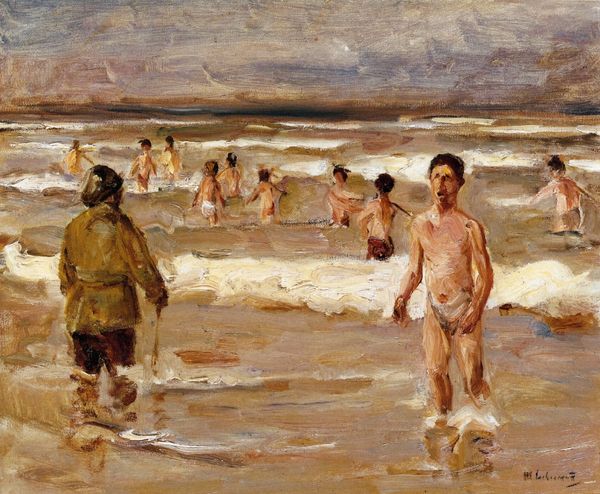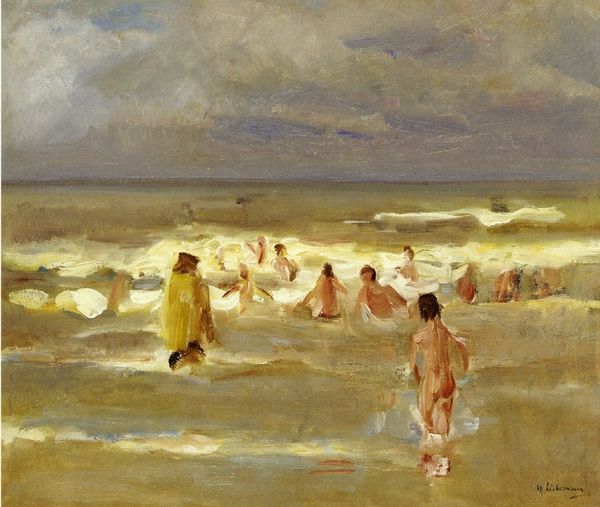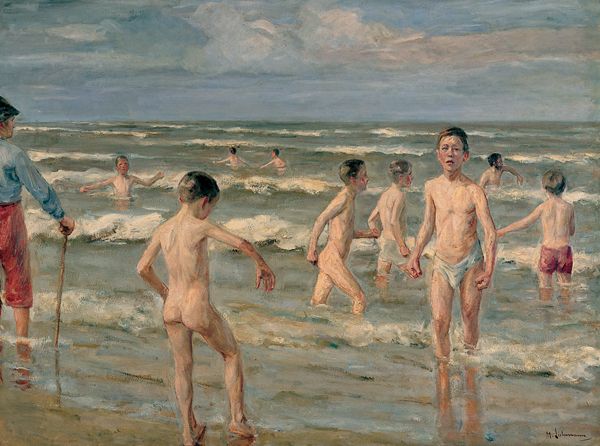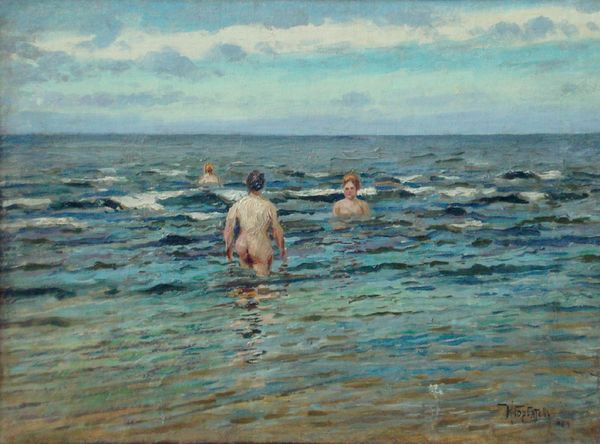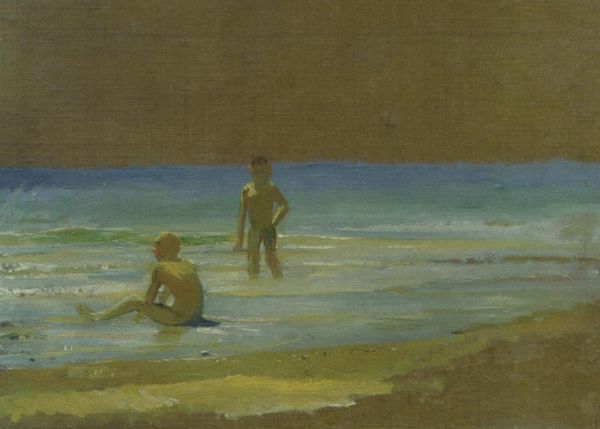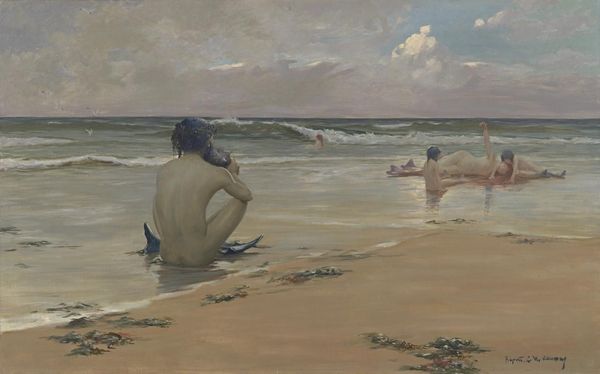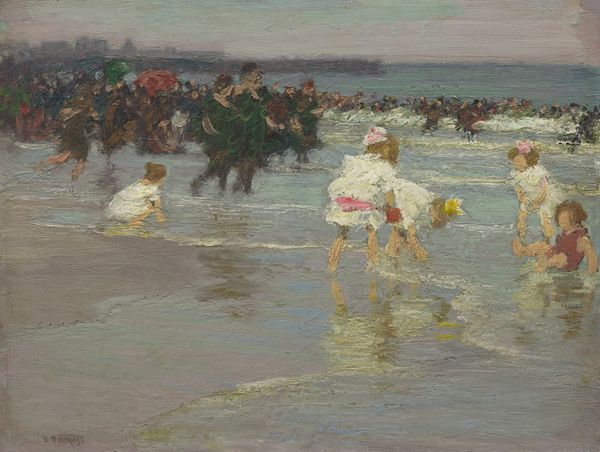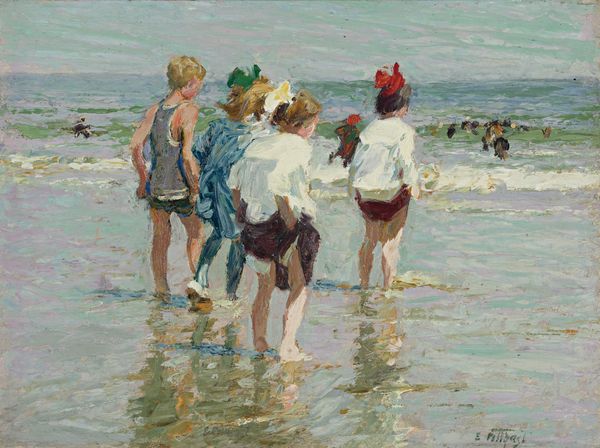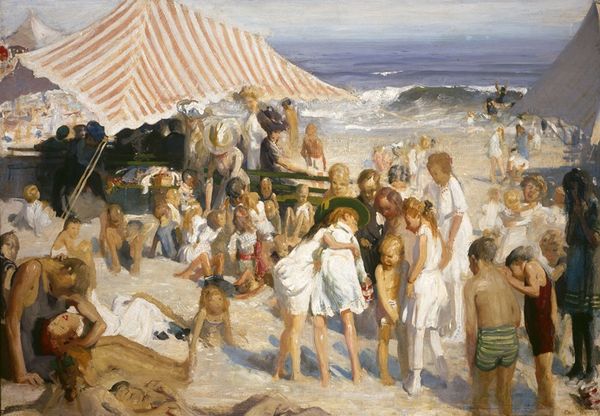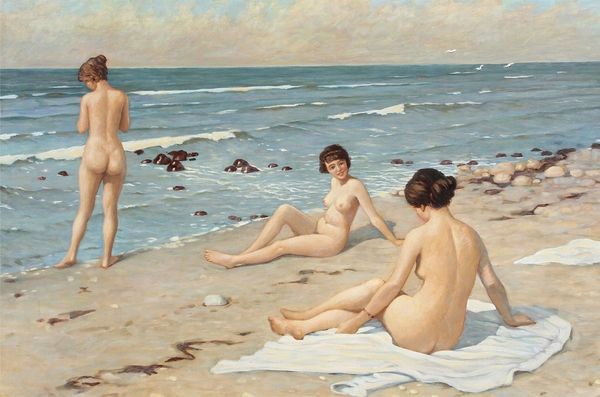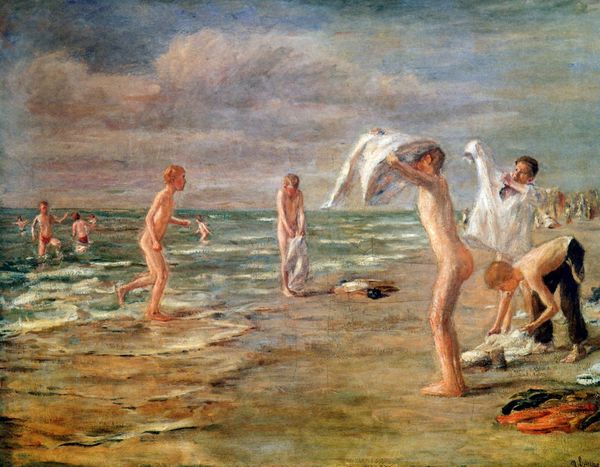
Dimensions: 36.8 x 46 cm
Copyright: Public domain
Curator: Standing before us is Max Liebermann’s "Boys Bathing with Beach Warden," an oil painting rendered circa 1907. Editor: There's a striking immediacy here. The brushstrokes are so visible, capturing the roughness of the sea air and the constant motion of the water. It feels raw, almost unfinished. Curator: Rawness is central to Impressionism’s goals, the effort to seize that immediate, fleeting sensation. Notice the interplay between the figures. The lifeguard, staff in hand, his back to us, observing the youthful bathers, oblivious, lost in the cold waters. What significance does that arrangement suggest to you? Editor: It brings to mind the labor of leisure. These boys are playing, yes, but somebody, most likely working-class, has to watch over them, his form blending into the muted seascape. That muted quality of the water and sky is due to the lead content in the white pigment and how rapidly that reacts with oxygen once mixed with oil paint and medium. Curator: An interesting consideration, framing the image around themes of observation and potential threat. Water, of course, holds complex symbolism – purification, danger, the unconscious. The figures emerge, reborn from it. Liebermann often incorporated children playing in many of his artworks. Editor: It is curious how the visible brushstrokes also draw attention to the physical process of painting itself. We can almost trace Liebermann’s movements as he applies thick swathes of paint to create texture and depth on the canvas. Curator: And color itself evokes the coolness, the season; the very feel of a day at the shore. What are these young men seeking from their dip? To purify themselves perhaps in the sublime force of the water. A very material and elemental sort of baptism if you will. Editor: For me, the subdued palette reveals the hard labor of those paints' creation. It reminds us how tied this apparent 'slice of life' is to the historical conditions of material production. Curator: Well, it makes you wonder about our relationship to it as observers now and where that act situates us. Editor: Exactly, and by calling it the labor of leisure we're talking about where all these boys stood socio-economically. The labor itself produced this lasting art object that is still admired today.
Comments
No comments
Be the first to comment and join the conversation on the ultimate creative platform.
